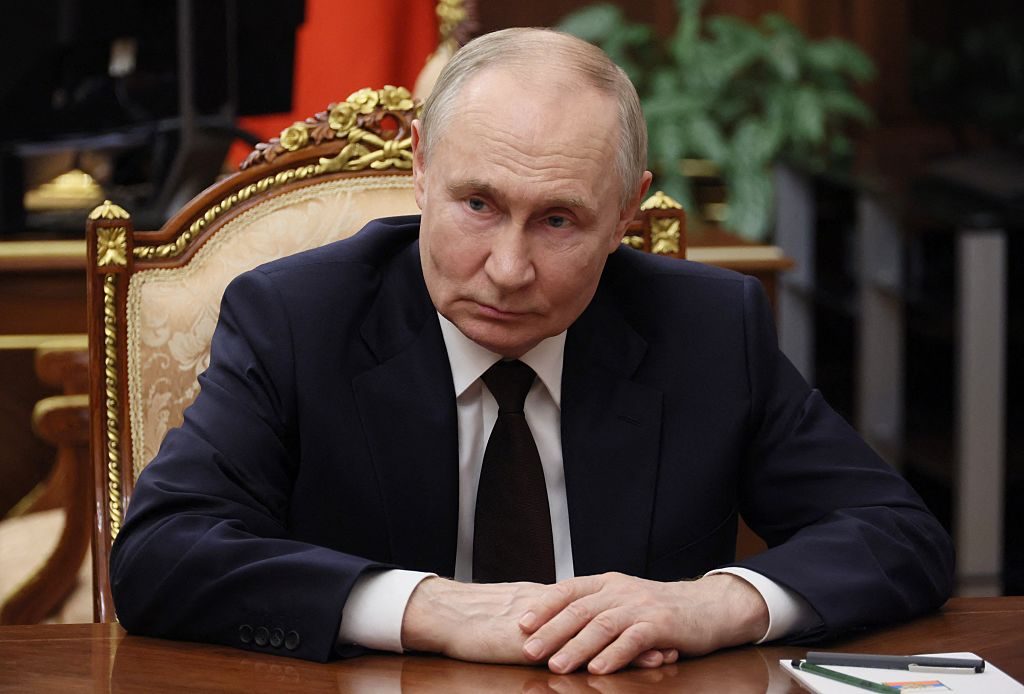Russia has confiscated assets worth $50 billion over the past three years. New research reveals the extent of these nationalisations, as Western firms have fled the market and other assets have been expropriated or seized. Reuters described it as merely one facet of the “Fortress Russia” economic model brought about by the war in Ukraine. But just how strong is that fortress? Since 2022, rumours of the demise of Russia’s economy have been greatly exaggerated. Although analysts have been eagerly — and disappointedly — searching for indicators of serious instability, wages are up, unemployment is down, and the country has proven resilient to sanctions. Despite all this, Russia’s economic model may now be reaching its limit.
There are cracks appearing in the walls of “Fortress Russia”. Last month, the country’s Minister of Economic Development Maxim Reshetnikov publicly warned of the country being “on the verge” of recession, with “current business sentiment and indicators” suggesting an economic slowdown. The numbers back him up. Russia’s economic growth slowed to 1.4% year-on-year in the first quarter of 2025, down from 4.5% growth in the previous quarter and 5.4% in the same period of 2024. The downturn has been attributed to the reallocation of resources to defence from the civilian sector and falling oil and gas prices.
Sanctions, high levels of government defence spending, and labour shortages have helped keep inflation persistently high, at more than double the Central Bank’s target of 4%. For their part, policymakers have been torn over how to reach that goal. In a bid to tame inflation, the Central Bank raised interest rates to 21% in October and lowered them to 20% last month. These eye-watering levels make it expensive for businesses to raise the capital needed to invest. While some poorer families have benefitted from a relative in the army, those financial gains have not been shared evenly throughout the country and surging food prices have been eating into the wage gains of ordinary Russians.
Former Central Bank official Alexandra Prokopenko has warned that “slowing economic growth coupled with high inflation leaves Russia close to stagflation”, making Moscow especially vulnerable to additional falls in oil prices or tighter sanctions. The recent ceasefire ending the Iran-Israel conflict rapidly brought oil prices down. Meanwhile, following Donald Trump’s irritation with Putin over his reluctance to end the Ukraine war, the US President has shown greater support for Senator Lindsey Graham’s punishing sanctions bill. He has also threatened to introduce a 10% tariff on countries doing business with the Brics alliance of which Russia is a member. Moscow is aware of its vulnerability: internal documents from February revealed budget constraints, a rise in bad corporate debt, lower oil prices and an increase in US and Opec oil output as top concerns behind the scenes. The system which has powered Putin’s military economy may soon need new forms of stimulus.
Calls for change are growing among senior figures. Last month, Economic Advisor to the Presidential Administration Maxim Oreshkin admitted that “the model that ensured growth in recent years has largely reached its limit”, and that the economy now needs to shift towards productivity and long-term competitiveness. Meanwhile, Russian Central Bank Governor Elvira Nabiullina said that “we grew for two years at a fairly high pace because unused resources were activated. We need to understand that many of those resources have truly been exhausted.” She made those remarks at the St Petersburg International Economic Forum in June. Traditionally a platform to highlight Russia’s economic strengths, it likely left the assembled entrepreneurs feeling less than reassured. While we may not be witnessing the demise of the Russian economy, we are seeing it running up against its limits.
